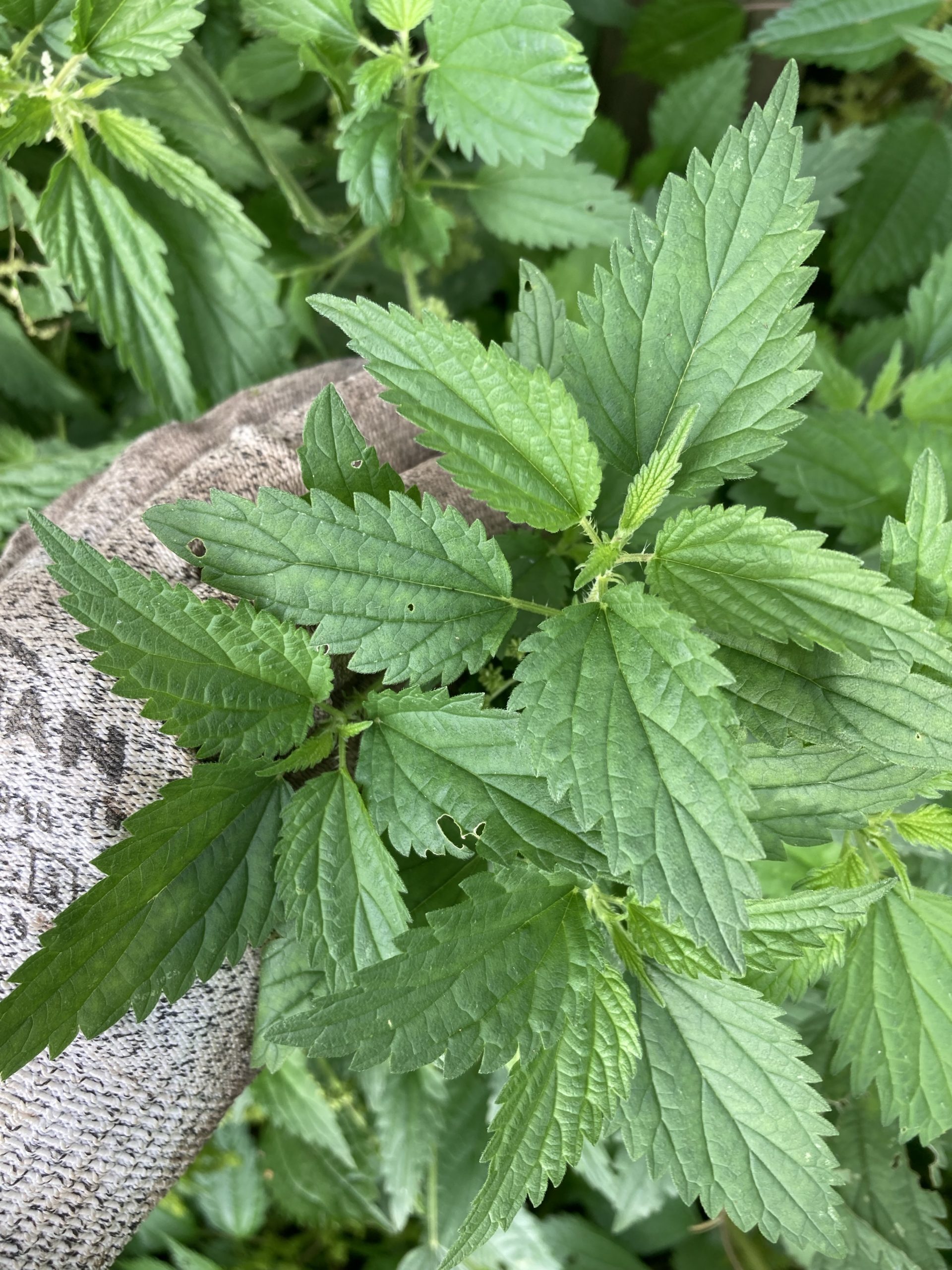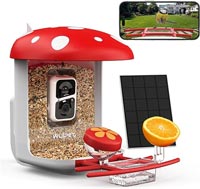
Stinging Nettle-Urtica dioica

I remember exploring barefoot in the back acreage of my grandparents. I would eat plants that (at the time) I had no idea what they were about. I assume, it just felt right, so I ate it. Oregon grape is a plant that I had no idea what the name was, until my herbal studies by identifying by the image that, what I called popcorn was a super power plant. Where her roots have antimicrobial properties, so helps our lymphatic system run smoothly. I digress, we are here for Stinging nettle.
As I explored I would feel this tingling on my skin, a bit itchy but the raised bumps was the most annoying part of my adventures rather than the sting. I would just carry on, each day, not really paying attention to what was actually doing that to my skin. Well, it was Stinging nettle. Now, I’m very grateful to be friends & enjoying all the medicinal benefits she provides.

Warning: Use gloves when working with fresh Stinging nettle. Once dried or steamed, the stinging will no longer be a problem.
Parts used: Leaf, seed & root
Energetics: Neutral & nourishing
Properties: Anti-allergenic, anti-inflammatory, antihistamine, diuretic, kidney tonic, mast cell stabilizer, mineralizer, tonic. Nourishing herbal food, rich in iron, calcium & magnesium. Great for anemia, general weakness, low blood pressure. Respiratory asthma, low blood pressure. Arthritis, rheumatism, & adrenal support. Adaptogen, alterative & astringent. Skin problems such as eczema. Great tonic for the reproductive system, growing pains in children & an all around energy booster.
Growing
Hardy Perennial. Loves to grow in groups in the wild, I’ve never seen a lonely Nettle growing. Spacing 15-30 cm. Can easily be propagated from runners. Likes rich soil & semishaded.
Harvesting
Harvest on a dry day, with gloves. If you are clumsy like me, id suggest long sleeves & long pants as well. Harvest the leaves in the spring throughout early summer. Do not harvest the leaves if there are seeds. The uric acids levels will be high. Harvest 6 inches from the base, or to where the leaves aren’t as vibrant anymore. You can also just cut individual leaves and dry them like that as well, if you are not interested in harvesting the whole plant, or if your plant is being inhibited by some critters. Be sure when harvesting the soil has not been contaminated, as Nettle will bring all of the toxins up from the roots.
Drying
Hang upside down in small bundles out of direct sunlight. Or you can use the dehydrator at 42c/108f for 12 hours. Shuffle the trays & dry for 2-3 hours at a time for the right crispness. Once dry, store in glass jars out of sunlight.

Dosing
Infusion:
8 oz, 1-4x/day
Tincture:
Fresh leaf 1:2, 95% alcohol, 1-3 ml 3x/day (allergies)
Dried leaf 1:4, 50% alcohol, 2-5 ml 3x/day (kidney)
Root: Dried root 1:4 50% alcohol, 2/5 ml 3x/day (prostrate issues)
Seed: Dried seed 1:4, 50% alcohol, 1-2ml 3x/day (kidneys)
Glycerite:
Dried leaf 1:6, 10-20 ml 3x/day (allergies)
Did you know?
Nettle is high in silica, which means she supports hair & nail growth.
Candice
I want to show others that medicine is all around us. There are many common backyard plants that we can benefit from. Including what we use as a day to day culinary herb within our dishes can have a huge impact on our daily health. Being conscience of different common herbs that you might already have in your pantry & work with them to enhance your families health.
Categories
Affilliate Links
She’s always barefoot is a participant in the Amazon Services LLC Associates Program, an affiliate advertising program designed to provide a means for us to earn fees by linking to Amazon.com and affiliated sites. Affiliate links in the form of Banner Ads and Text Links. We may receive compensation on sales via the links to our vendor partners and sponsors. I may receive monetary or other types of compensation for my endorsement, recommendation, and/or link to any products from this blog.





